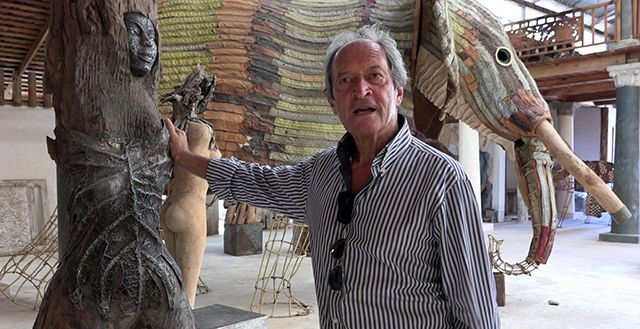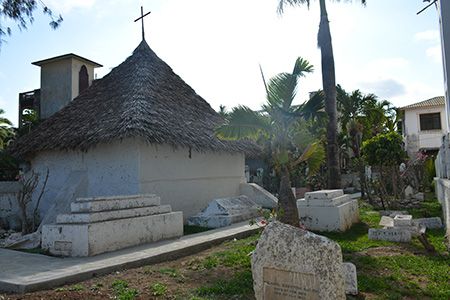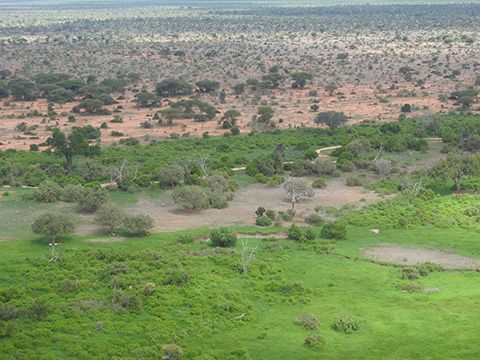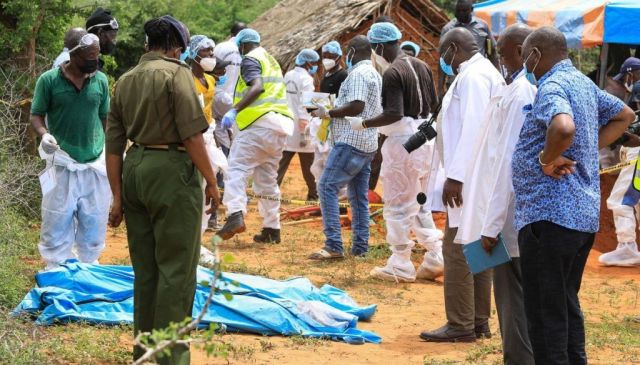
STORIES
25-06-2022 by Freddie del Curatolo

One of the African branches of the Catholic Church born in the heart of Kenya has turned 100 years old. The Akorino congregation, officially known as the Church of the Holy Spirit of East Africa, has become an integral part of society, especially in Nairobi province and the so-called Highlands.
Although adherents identify themselves as Christians, Akorino is part of the independent African Pentecostal Churches and in this sense has been rubricated by Rome.
Its adherents wear turban-like headdresses reminiscent of those of Indians in the Sikh ethnic-religious community, but there is obviously no connection between the two faiths.
President Uhuru Kenyatta wore that headdress a few days ago while participating in the Akorino's 100th anniversary celebration. An important date, even though official historians date the birth of the Church of the Holy Spirit of East Africa to 1959, which is when the congregation was registered in Kenya.
Testimonies and old photographs, on the other hand, date back to 1922, in Limuru in Kiambu County, the birth of the first Akorino group, which according to University of Nairobi scholar Philomena Njeri was formed because of "conflicts and tensions created by economic, political, social, religious and cultural pressures" among different cohorts of Kenyans after the advent of Christianity began to spread in Kenya with the arrival of the first German missionaries around 1830.
According to current independent church leaders, the word "akorino" is said to derive from the Gikuyu dialect question "Mukuri nu?" the translation of which would be "Who is the redeemer?"
The first to mention them in a publication was none other than Kenya's first president, Jomo Kenyatta, in his book "Facing Mount Kenya," referring to the believers as "aroti," or dreamers in gikuyu, but also as "arathi," which means "prophets" instead.
Indeed, for many years the sect was a purely ethnic phenomenon, proselytizing exclusively on the Kikuyu. This is evidenced by the fact that Christian beliefs and practices were also joined by tribal traditions and values. The Akorino were also persecuted for their different religious practices and identified as different and bizarre because of their turbans and white robes.
"The Akorino were born as a freedom-fighting group," recalled former Prime Minister Raila Odinga during the celebration of their 100th birthday, "Some died because of their religious beliefs, while others fought for independence. Their generations have prospered and continue to spread the gospel. Our founding father Jomo Kenyatta showed us the significance and importance of the Akorino."
Over the years other ethnic groups also came to this cult, which from being almost fundamentalist and in practice very conservative, with a strong pacifist component, has transformed following the times. Until Kenya's independence, for example, no Akorino could marry partners outside the same faith, women had to dress more than skimpily, and drinking alcohol and smoking cigarettes were prohibited.
Today, men and women can marry whomever they want and dress more freely, preserving strict traditions of vestments (always white, by virtue of their pacifist nature) for their ceremonies. This evolution has been provoked by young believers who firmly believe that the faith must change with the times. For them, the church cannot continue to exist in the past or ignore the influences of modern life. Young members meet in public places in Nairobi and mingle with modern Kenyan culture that until the last century had been snubbed.
A gospel ensemble that sings traditional songs is often at the top of the music charts, and a team composed of players of the Akorino faith is vying for promotion to the Kenyan soccer league's Premier League. Today, it is no longer just a matter of creed, but one can speak of a lobby whose ranks include businessmen, politicians, and emerging figures who move with ease in the plots of power.
NEWS
by redazione

The number of bodies buried in the land owned by Malindi 'pastor' Paul Mackenzie, who was arrested...
NEWS
by redazione

It is an unceremonious Easter this year in Kenya and East Africa.
Current...
NEWS
by Freddie del Curatolo

Kenya is increasingly shocked by the case of the now infamous 'fasting cult' of Shakaola, in the coastal...
STORIES
by Freddie del Curatolo

There are thefts and robberies that end badly, but that attempted Sunday night in the ...
DOCUMENTARY
by redazione

The filming of the documentary film "Italian in Kenya" has ended. It's a short feature commissioned by the Italian Foreign Ministry, through the Italian Institute of Culture in Nairobi, as part of the week of Italian language in the world.
MALINDI
by redazione

REPORTAGE
by Freddie del Curatolo

There is a lot of Italian memory in Kenya, more than the happy vacationers of ...
CRONACA
by Freddie del Curatolo

The most regrettable cult and death affair ever in Kenya, the so-called 'Shakaola massacre' in the hinterland...
Appointments
by redazione

The appointment is not to be missed, for Italians who are in Malindi and surroundings in this period.
Saturday, October 15 at 18 at the National Museum of Malindi (former DC office, behind the square of change, Uhuru Garden) the...
NEWS
by Freddie del Curatolo

Rain falls almost incessantly on Malindi. It is a blessed rain, long overdue for months for those who...